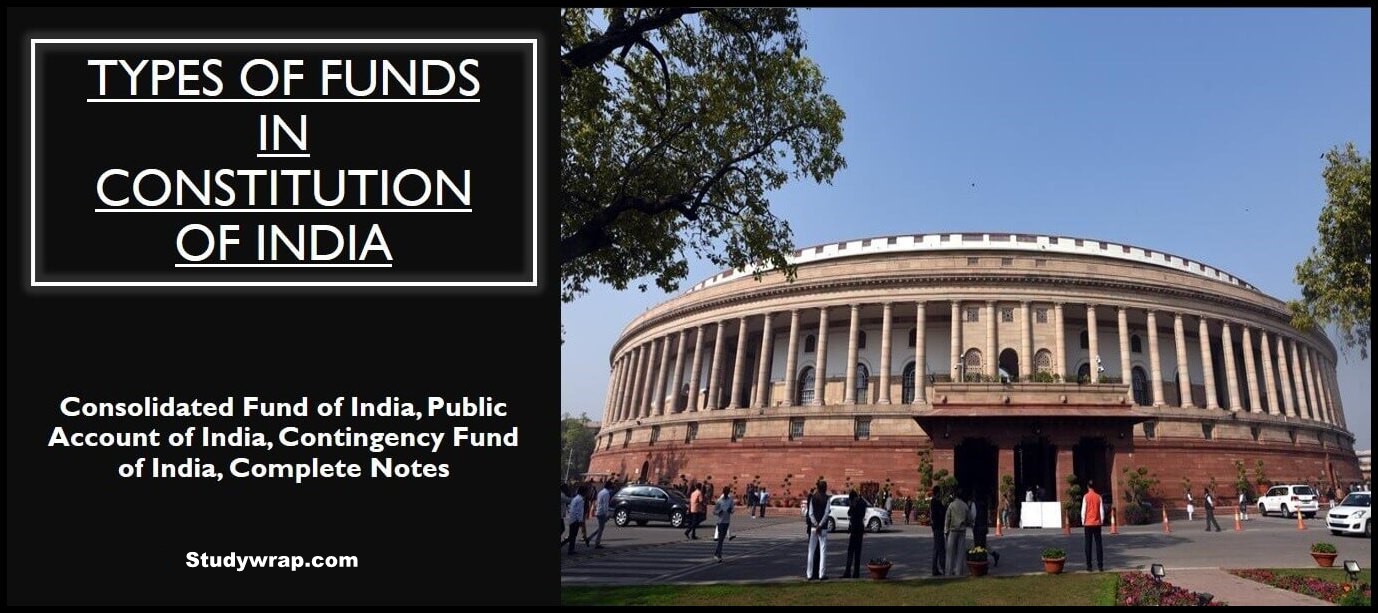Types of Funds in Constitution of India
Types of Funds in Constitution of India
Table of Contents
- The Constitution of India provides for the following funds for the Central government –
-
- Consolidated Fund of India (Article 266)
- Public Account of India (Article 266)
- Contingency Fund of India (Article 267)
-

Consolidated Fund of India
-
- Funds to which all receipts are credited and all payments are debited.
- It is a funds which receives –
-
- All revenues (tax and non-tax revenues) collected by the Government
- All loans raised by the government by the issue of treasury bills, loans and means of advance.
- All money received by the Government in repayment of loans from the consolidated funds of India.
-
- No money out of this fund can be drawn except in accordance with a parliamentary law.
- All the legally authorised payments on behalf of the Government of India are made out of this fund.
Public Account of India
-
- All the money received by the Government not forming part of Consolidated Fund is deposited into this account.
- This includes provident fund deposits, judicial deposits, savings bank deposits, departmental deposits, remittances and so on.
- This account is operated by executive action, that is, the payments from this account can be made without parliamentary appropriation.
Contingency Fund of India
-
- The Constitution authorised the Parliament to establish a ‘Contingency Fund of India’, into which amounts determined by law are paid from time to time.
- The fund is held by the finance secretary on behalf of the president.
- It is also operated by executive action.
- The present corpus of Contingency Fund is Rs. 500 crores.
- In case of emergencies and urgent requirements, the money can be spent from the Contingency Fund without the prior approval from the Parliament.
- Approval of the Parliament is obtained subsequently. The money spent from this Fund is reimbursed by the Consolidated Fund.
- This way, the corpus of the Contingency Fund is always maintained.
These accounts are of the Central Government. Each of the State Government have separate Consolidated Fund, Contingency Fund and the Public Account, i.e. each of the states have these funds.
Difference between the Different Types of Funds in Constitution of India
|
Name of the fund |
Consolidated Fund of India |
Public Accounts of India |
Contingency Funds of India |
|
Article |
266 |
266 |
267 |
|
Purpose |
Revenues (Tax & Non Tax) Treasury Bills Whereas and means Advance |
All other public money received by government (other than that goes to Consolidated Fund) Eg. PF, Post Office Saving etc. |
To meet emergency expenditure fund size is determined by Parliament
|
|
Custody |
Parliament |
Executive |
President (Finance Secretary handles it) Post expenditure Parliament approves it |
|
Income |
Taxes and non-tax revenue |
Public money other than those under consolidated fund |
Fixed corpus of Rs. 500 crore |
|
Expenditure |
All expenditure |
|
Unforeseen expenditure |
|
Parliamentary Authorisation |
Prior to expenditure |
Not required |
After the expenditure |
So, this was all about the Different Types of Funds in Constitution of India.
In the Next Post (Click Here), we will study about the Parliamentary Privileges and its Classification.


The Ministry of Finance is the apex controlling authority.